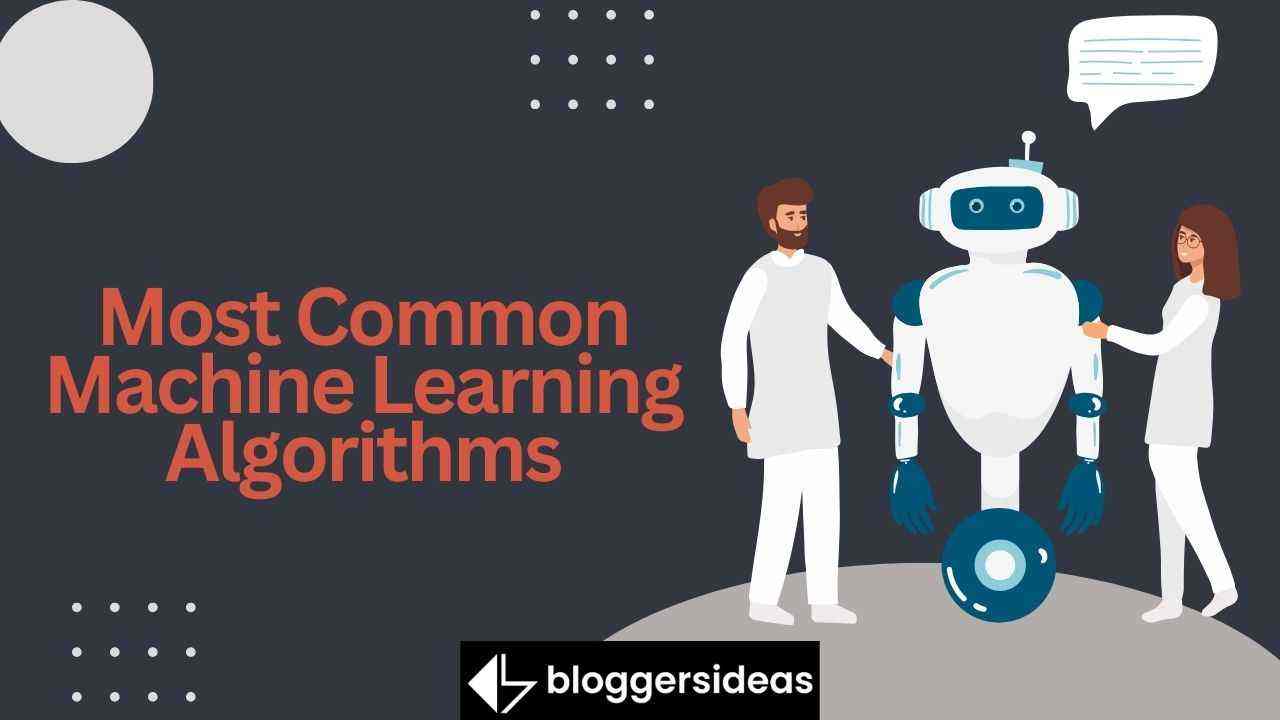In this post, we’ll be taking a look at the most common machine learning algorithms and explaining them in a nutshell. This will help you understand how they work and when to use them.
Machine learning algorithms are widely used in business and science to make predictions or recommendations.
If you’re working with data, or plan to work with data in the future, then you need to know about machine learning algorithms. But don’t worry, you don’t need to be a genius mathematician to understand them!
In this blog post, we’ll break down 11 of the most common machine learning algorithms and explain them in a nutshell. So whether you’re just starting out in data science or you’re an experienced engineer, read on for a crash course in machine learning algorithms.
If you’re like most data science professionals, you’re always on the lookout for new and innovative ways to improve your machine learning models. But with so many different algorithms to choose from, it can be difficult to know where to start.
In this blog post, we’ll take a look at eleven of the most common machine learning algorithms, and explain how they work in a nutshell.
Armed with this knowledge, you’ll be able to choose the right algorithm for the task at hand and get started on building better models faster.
11 Most Common Machine Learning Algorithms 2024
Also Read:
- Jasper Ai Free Trial
- Jasper AI Coupon Code
- LeadPages vs Instapage
- Leadpages vs Unbounce
- Best AI Writers, Content Writing Software
- Best AI Copywriting Tools
- Best AI Tools to Automate Your Facebook Ads
- Content Studio Pricing
- Jasper AI Review
- What Are The Best Article Spinning Tools
4. Naive Bayes Classifiers
are a type of machine learning algorithm that is used for both classification and regression. They are based on the Bayesian theorem and make predictions by using a probabilistic approach.
As we have seen, the naive Bayes classifier is a very simple and powerful tool for classification. The key idea behind the classifier is to find a set of weights that can be used to distinguish between two classes.
In order to do this, we need to first find a set of features that are useful for discriminating between the two classes.
Once we have found these features, we can then use them to train a classifier. The naive Bayes classifier is a very popular tool for classification, and it is often used in machine learning applications.
The key advantage of the naive Bayes classifier is that it is very simple to implement and it is also very fast to train. The classifier is also very robust to noise and outliers. However, the classifier has a few disadvantages.
First, the classifier makes a strong assumption about the independence of the features. This assumption is often not true in practice, and it can lead to poor performance. Second, the naive Bayes classifier does not scale well to large datasets.
This is because the classifier has to compute the probabilities for all of the features in the dataset, which can be very time-consuming. Finally, the naive Bayes classifier can be biased if the training data is not representative of the test data.
5. Decision Trees
are a type of machine learning algorithm that is used for both classification and regression. The goal is to find the decision tree that minimizes the error.
Classification trees are used to predict a class label (e.g. type of animal, type of car).
Regression trees are used to predict a numeric value (e.g. price, temperature).
Classification and regression trees are created by training an algorithm on a dataset. The algorithm looks for patterns in the data and uses those patterns to create a tree.
The tree is then used to make predictions on new data. For example, if you have a classification tree that predicts the type of animal-based on its features, you can use the tree to predict the type of animal for a new data point (e.g. an unknown animal).
To make predictions, the algorithm simply follows the path of the tree from the root to the leaves. The final prediction is made by taking the majority vote of the leaves (for classification trees) or averaging the values of the leaves (for regression trees).
Decision trees are a powerful tool for solving problems, but they are not perfect. One downside of decision trees is that they can overfit the training data.
This means that the tree may not generalize well to new data, and may not be accurate. To avoid overfitting, it is important to use a good cross-validation strategy when training your decision tree.
6. Random Forests
are a type of machine learning algorithm that is used for both classification and regression. The goal is to find the forest that minimizes the error.
Random forests are a type of machine learning algorithm that is used for both classification and regression tasks. This algorithm works by creating a set of decision trees, each of which is trained on a random subset of the data.
The final prediction is then made by averaging the predictions of all the individual decision trees. This approach has several advantages over other machine learning algorithms, including improved accuracy and decreased overfitting.
Random forests are a powerful tool for both classification and regression tasks. They have the ability to handle large datasets with many features, and they can also be used to improve the accuracy of other machine learning algorithms.
Additionally, random forests are relatively easy to use and interpret, which makes them a good choice for many applications.
7. Gradient Boosting Machines
are a type of machine learning algorithm that is used for both classification and regression. The goal is to find the machine that minimizes the error.
Gradient boosting machines are a type of machine learning algorithm that can be used to create predictive models. The algorithm works by sequentially building models and then combining them to create a final model.
The advantage of this approach is that it can help to reduce overfitting since each individual model is less likely to overfit the data.
Related Videos of Machine Learning Algorithms:
8. Neural Networks
are a type of machine learning algorithm that is used for both classification and regression. The goal is to find the neural network that minimizes the error.
Neural networks are a type of machine learning algorithm that is used to model complex patterns in data. Neural networks are similar to other machine learning algorithms, but they are composed of a large number of interconnected processing nodes, or neurons, that can learn to recognize patterns of input data.
Neural networks are commonly used for tasks such as image recognition, speech recognition, and machine translation.
Neural networks are a powerful tool for machine learning, but they are also complex algorithms that can be difficult to understand and tune. In this post, we will introduce some of the basics of neural networks and how they work.
9. K-means Clustering
is a type of machine learning algorithm that is used for both classification and regression. The goal is to find the k-means that minimize the error.
K-means clustering is a type of unsupervised learning, which is used when you have unlabeled data (i.e., data without defined categories or groups). The goal of this algorithm is to find clusters in the data, with the number of clusters represented by the variable K.
The algorithm works by assigning each data point to a cluster, and then iteratively finding the centroid of each cluster. This process is repeated until the clusters no longer change.
10. Dimensionality Reduction
is a type of machine learning algorithm that is used for both classification and regression. The goal is to find the reduced dimension that minimizes the error.
There are many ways to perform dimensionality reduction. The most common method is Principal Component Analysis (PCA).
PCA is a linear transformation that transforms the data into a new coordinate system such that the greatest variance by some projection of the data comes to lie on the first axis, the second greatest variance on the second axis, and so on.
Other popular methods for dimensionality reduction include Linear Discriminant Analysis (LDA), Sammon mapping, Non-negative matrix factorization (NMF), Multidimensional scaling (MDS), Isomap, Locally linear embedding (LLE), and Autoencoders.
Dimensionality reduction is often used as a pre-processing step for machine learning algorithms. It can help to improve the performance of these algorithms by reducing the noise in the data and making the patterns easier to detect.
Related Videos of Machine Learning Algorithms:
11. Reinforcement Learning
is a type of machine learning algorithm that is used for both classification and regression. The goal is to find the reinforcement that minimizes the error.
Reinforcement learning is a type of machine learning that enables agents to learn from their environment by trial and error. Agents receive rewards for completing certain tasks, which incentivizes them to learn how to complete those tasks efficiently.
Reinforcement learning has been applied to a variety of problem domains, including robotics, game playing, and control systems.
Quick Links:
- What is Machine Learning? How Machine Learning works?
- AI vs Machine Learning vs Deep Learning: What Are The Major Differences?
- What is the Difference Between Artificial Intelligence (AI) and Machine Learning
- What is e-Learning? Know The Importance of learning In Education
Conclusion: Machine Learning Algorithms 2024
In conclusion, machine learning algorithms are a fascinating study and have many practical applications. While this article has only scratched the surface of these complex algorithms, we hope you now have a basic understanding of how they work.
If you’d like to learn more about machine learning or any other area of computer science, don’t hesitate to reach out to us.
We’re always happy to help budding data scientists learn more about this exciting field!





